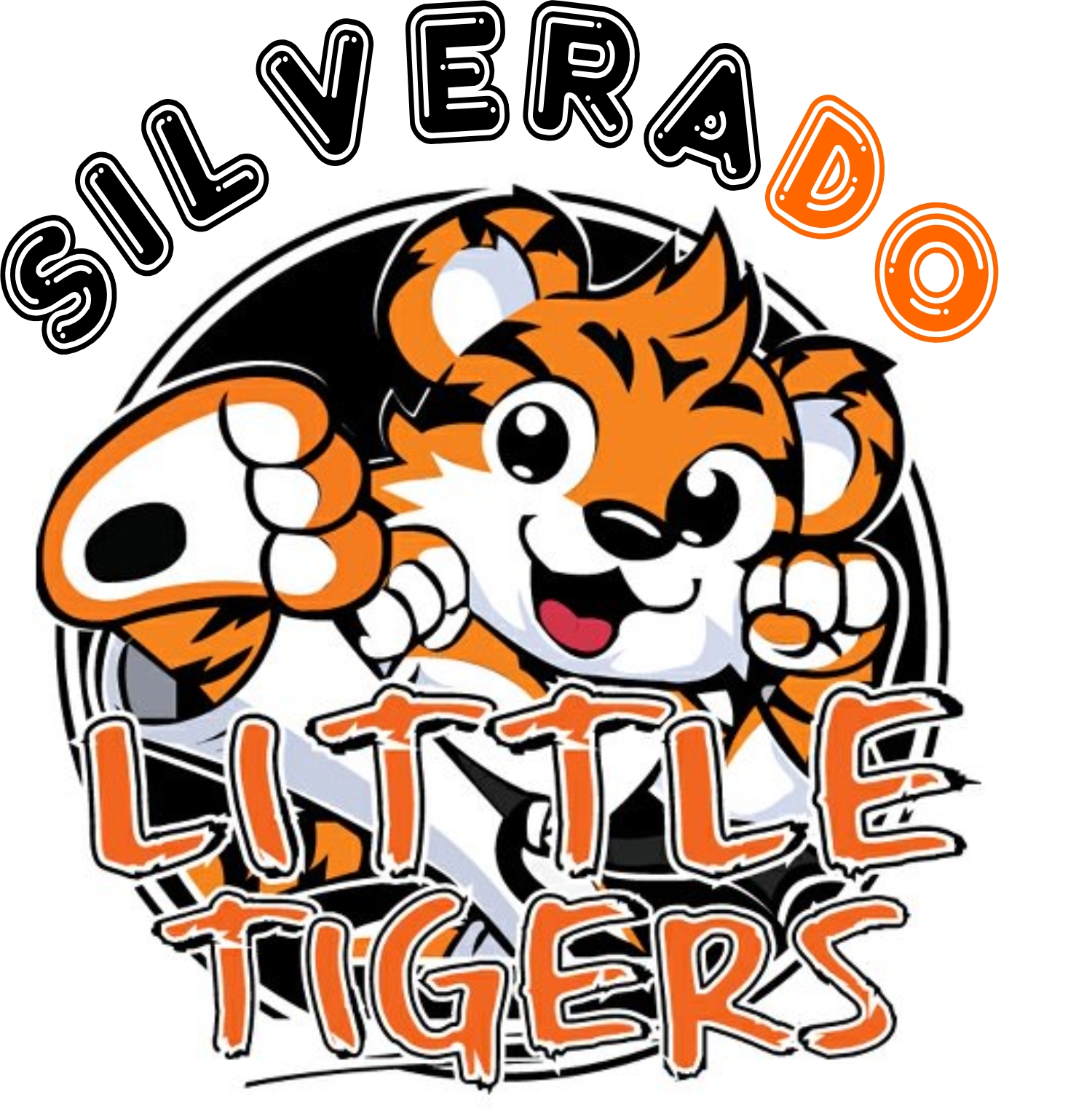 The Little Tiger program is a great way to introduce children (6-10) to Karate-do (Sport) & Ju-Jitsu. In sport karate, students will learn the dynamic, active competition training techniques and rules of Olympic Karate. Fitness with strategic technical and tactical skills has propelled this program based on the latest research and up-to-date training techniques. In Karate Jitsu, students will learn to play on the floor. The ground is a natural environment for kids; it is one of their first teachers. Babies use it to learn and develop early movement skills like crawling, rolling over, and sitting upright.
The Little Tiger program is a great way to introduce children (6-10) to Karate-do (Sport) & Ju-Jitsu. In sport karate, students will learn the dynamic, active competition training techniques and rules of Olympic Karate. Fitness with strategic technical and tactical skills has propelled this program based on the latest research and up-to-date training techniques. In Karate Jitsu, students will learn to play on the floor. The ground is a natural environment for kids; it is one of their first teachers. Babies use it to learn and develop early movement skills like crawling, rolling over, and sitting upright.
This program offers to young people the opportunity to reach a harmonic equilibrium between body and mind. In fact, we find, in Karate Jitsu, all the essential psychomotor elements.
Karate Jitsu skills, exercise, and physical fundamentals are a great way for kids to gain coordination, balance, and strength. Focus, concentration, listening, respect and courtesy are stressed in order to develop a child's basic learning skills.
What Are the Benefits of Martial Arts for Kids?
Martial arts classes aren't designed to turn your child into a mini fighting machine. Instead, practices build self-confidence, respect, and pride.
Of course, martial arts give kids a chance to be active, which helps work off energy in hyper little ones or gets kids who tend to be sedentary up and moving. However, these ancient practices also teach your kids responsibility, bolster self-esteem, enhance concentration and develop respect for themselves and others.
Enroll in any form of martial arts in which your child shows interest, as it's not so important what type of martial art he does, but that he does one. Anytime after age 6 is a good time for a kid to start martial arts training as he has the motor skills to punch and kick.
- Physical Benefits
The Centers for Disease Control and Prevention recommends children do an hour or more of physical activity daily; make it a combination of cardio, muscle-strengthening and bone-strengthening activities.
Martial arts helps him meet this goal. Warm-ups usually involve raising the heart rate, as do repeated series of punching and kicking drills. Some martial arts programs encourage push-ups and other bodyweight strength-training moves, as well. If martial arts replaces time in of the television, computer monitor or video game console, all the better.
- Responsibility
Most martial arts require you to show up in a clean uniform and a neatly tied belt. Your child will quickly learn to take pride in his appearance and keep these items well cared for. Any other equipment, such as sparring gear, is also his responsibility to care for and keep together.
He'll also learn responsibility for his actions. Only by learning forms, paying attention in cla,ss and focusing on proper punching and kicking techniques will he advance in belt status. Much of this responsibility carries over into other aspects of your child's life — grades and behavior often see remarkable improvement after a child takes up martial arts.
- Self-Esteem
Kids in martial arts are usually grouped together by belt level, not age or popularity. As a result, younger kids can readily participate with the big kids — if they put in the work.
Self-defense techniques, such as those taught in Karate, can give a shy child a bit more confidence in the schoolyard. He'll probably never use them, but knowing that he can defend himself if challenged makes him feel more in control.
Advancing in belt status and doing well in front of his peers at testing fosters a sense of pride, too. At many dojos, higher belt levels oversee and guide lower belts in their learning; therefore, being skilled enough to pass on knowledge is a huge boost to self-esteem.
- Concentration
In a martial arts studio, it's about you, your teacher, your opp,onent and your body. There's no music, no videos and no machines to distract you. This helps a child concentrate on his actions and the task at hand.
In addition, martial arts usually include complex movements, including forms, kicks and blocks, all with their own names that are often in foreign languages. Your child may find that memorizing and executing these skills doesn't come naturally, and he'll have to develop great concentration to recall them, especially at belt testing.
- Respect
Respect is a major tenet of martial arts practice. This respect covers the lineage of the martial art, your master, higher belts, your uniform and yourself. You wait quietly to receive a command; you bow to your teacher to demonstrate respect.
This respect for others originates in the development of personal self-confidence. Martial arts teaches kids that they don't have to prove themselves to other kids, but rather that they're complete in themselves.

















